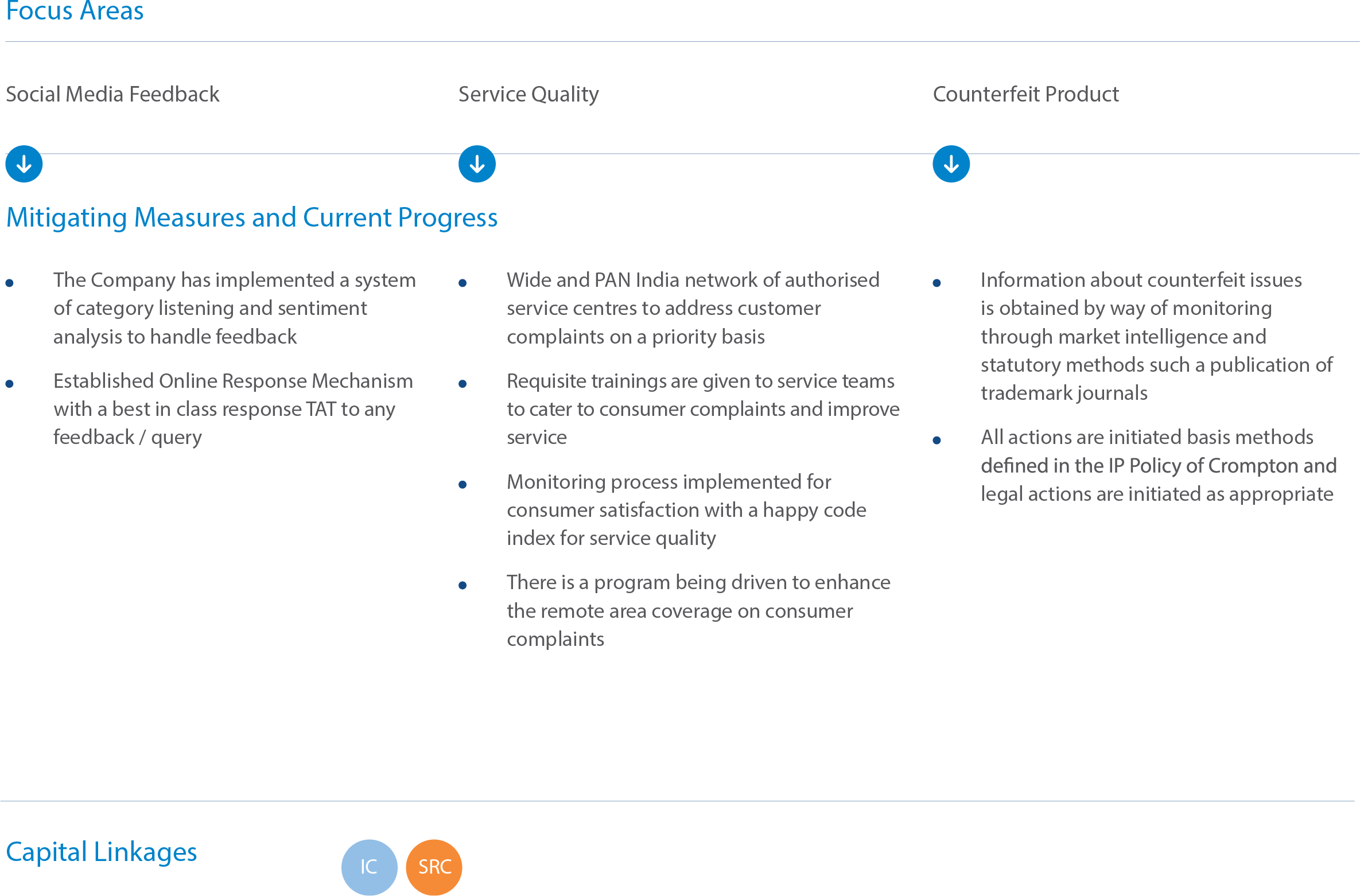Internal control framework for process optimisation
We prioritise reinforcing financial and operational controls to enhance transparency, accountability and efficiency in our processes. We adhere to an internal control framework that includes key process coverage that impacts the reliability of financial reporting, periodic control testing to assure design and operational effectiveness, implementation of remedial measures and regular monitoring by senior management and the Audit Committee. Internal audits are conducted periodically and any design deficiencies or operational inefficiencies are reported and improvement measures are recommended. The adequacy of controls is reviewed by the Audit Committee and specific processes are assessed for improvement in systems and outcomes.
E-learning modules have been developed to keep employees informed of the Company’s Code of Conduct, POSH compliances and whistleblowing rights. This ensures compliance and a controlled environment, while achieving our objectives. The Executive Director & Chief Executive Officer and Chief Financial Officer provide a certification statement in the Annual Report on the adequacy of internal control systems and procedures.
Process controls with evolving SAP solutions
We are constantly working to enable IT in key processes, embedding major controls in SAP for accuracy. Third-party validation is initiated to ensure system configuration effectiveness. Periodic reviews are conducted to control authorisation to SAP, based on function-based user access supported by the Governance Risk and Controls module. Evolving SAP solutions are utilised for process controls, with continued monitoring through automations and exception management.
Standardising processes for better decision-making
To ensure data and IT system security, we have implemented a single sign-on (SSO) feature for authorised access to our systems and applications. We are standardising processes across key functions such as Innovation, Design, Procurement and Quality for superior decision-making. Shared services for Accounts Payable process have been implemented to drive process improvement and better decision-making, with potential for expansion to other operational areas.
Download Full Report












